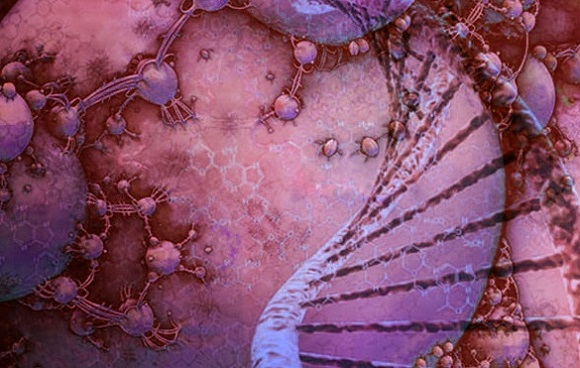Nikhil Prasad Fact checked by:Thailand Medical News Team Jan 22, 2025 3 months, 2 weeks, 4 days, 2 hours, 13 minutes ago
Medical News: A groundbreaking study by researchers at Nagoya University in Japan has unveiled a potentially critical mechanism contributing to the severe immune responses observed in COVID-19 patients. The study, led by Dr. Reia Yoshida and Dr. Hitoshi Ohtani from the Department of Animal Sciences, Graduate School of Bioagricultural Sciences, focuses on the activation of evolutionarily young endogenous retroviruses (ERVs) and their implications in COVID-19 immunopathology.
 Activation of Endogenous Retroviruses and Its Role in COVID-19 Immunopathology
Activation of Endogenous Retroviruses and Its Role in COVID-19 Immunopathology
These study findings could open new doors for understanding the complexities of the disease and designing targeted therapies.
Endogenous retroviruses are remnants of ancient viral infections embedded in human DNA, constituting approximately 8% of the human genome. While typically dormant, certain conditions, such as viral infections, can activate these elements. This activation could lead to the production of neoantigens and increased immune activity, which is already known to play a significant role in COVID-19 pathology. This
Medical News report delves into the details of this pivotal study, which explores the association between ERV activation and the heightened immune responses seen in COVID-19 patients.
Methodology: A Deep Dive into Data
The researchers utilized RNA sequencing (RNA-seq) data to analyze the transcriptome profiles of over 500 ERV subfamilies in eight tissue and cell types. These included platelets, peripheral blood mononuclear cells (PBMCs), lung tissue, brain tissue (frontal cortex and ventral midbrain), human umbilical vein endothelial cells, placenta, and cardiac microvascular endothelial cells. A total of 124 COVID-19 patient samples were compared with 53 healthy control samples, leveraging publicly available datasets from prior studies.
Notably, the study identified that ERV activation and immune responses were primarily evident in platelets and PBMCs, with minimal activity in other tissues such as the placenta. This specificity underscores the unique interaction between SARS-CoV-2 and the human immune system, highlighting the importance of focusing on these tissues for further investigation.
Key Findings: ERVs and Immune Reactivity
-ERV Activation in Platelets and PBMCs
One of the major findings was the significant upregulation of specific ERV subfamilies in platelets and PBMCs of COVID-19 patients. These subfamilies, identified as evolutionarily younger ERVs, exhibited lower genetic divergence levels compared to their older counterparts. This suggests that younger ERVs may play a more active role in immune modulation.
Interestingly, some ERV subfamilies, such as LTR7Y and MER52-int, were consistently upregulated in PBMCs, indicating their potential involvement in immune hyperactivation. The study hypothesizes that these younger ERVs act as enhancers of immune reactivity by presenting neoantigens or mimicking viral infections, a phenomenon known as "viral mimicry."
-Lack of ERV Activity in Placenta
Contrary to expectations, the placenta, despite showing significant ERV activation, did not exhibit corresponding immune reactivity. This finding points to tissue-specific differences in how ERV activation translates into immune responses, a discovery that warrants further investigation.
-Association With Disease Severity
The study also explored the relationship between ERV activation and COVID-19 severity. In patients requiring intensive care, two specific ERV subfamilies, HERVIP10B3-int and LTR14B, were notably upregulated. This suggests that these ERVs could serve as biomarkers for predicting disease progression and severity.
Implications for COVID-19 Research and Treatment
These findings are instrumental in understanding the complex immune dysregulation in COVID-19. By identifying the role of evolutionarily young ERVs in immune reactivity, the study provides a potential link between genetic factors and disease outcomes. This could pave the way for new therapeutic approaches targeting ERV activation pathways to mitigate severe immune responses.
Moreover, the identification of specific ERV subfamilies associated with disease severity opens avenues for developing diagnostic tools to assess patient risk and tailor treatments accordingly. The study also emphasizes the need for further research to validate these findings in larger cohorts and explore the underlying mechanisms of ERV-mediated immune activation.
Conclusion
The study findings provide a novel perspective on the role of endogenous retroviruses in COVID-19 immunopathology. By demonstrating the selective activation of evolutionarily young ERVs and their association with heightened immune responses, the research highlights a previously underexplored aspect of the disease. These insights not only deepen our understanding of COVID-19 but also offer promising directions for therapeutic interventions and risk assessment.
As the global scientific community continues to grapple with the challenges posed by COVID-19, studies like this underscore the importance of exploring unconventional pathways and mechanisms. The potential to use ERVs as biomarkers or therapeutic targets could revolutionize how we approach infectious diseases and immune disorders in the future.
The study findings were published in the peer-reviewed journal: Genes to Cells.
https://onlinelibrary.wiley.com/doi/10.1111/gtc.13194
For the latest COVID-19 News, keep on logging to Thailand
Medical News.
Read Also:
https://www.thailandmedical.news/news/breaking-sars-cov-2-upregulates-endogenous-retroviruses-that-play-a-role-in-covid-19-pathogenesis
https://www.thailandmedical.news/news/covid-19-news-sars-cov-2-reactivation-of-human-endogenous-retroviruses-contributes-to-kawasaki-disease,-mis-c-and-even-covid-19-severity
https://www.thailandmedical.news/news/covid-19-news-researchers-discover-that-sars-cov-2-infection-activates-endogenous-retroviruses-of-the-ltr69-subfamily
https://www.thailandmedical.news/news/breaking-covid-19-news-study-discovers-that-sars-cov-2-modulates-human-endogenous-retrovirus-herv-transcriptome-during-infection
https://www.thailandmedical.news/news/breaking-sars-cov-2-infection-induces-human-endogenous-retrovirus-type-w-envelope-protein-expression-in-blood-lymphocytes-and-tissues
